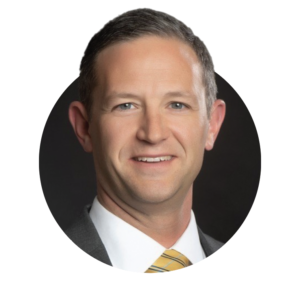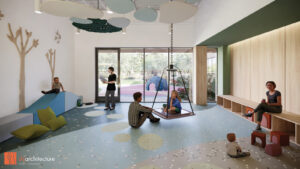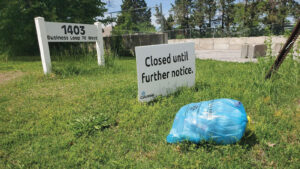Prudent business people depend on key performance indicators to gauge the success of their organizations. If they observe the continued erosion of these published metrics, some tougher questions are necessary.
What is leading to this underperformance? Have there been significant changes in market conditions or customer needs? Do frontline staff have the resources they need to do the job? How is internal communication? Should we supplement our service offerings to meet customers where they are?
Your manager’s group and labor leaders claim if they just had more money for staff raises it’d get better, while others recommend outsourcing underperforming units.
You ask the frontline staff and get sheepish canned responses, until in friendly conversations, curious clues emerge. Then maybe offsite, outside the public eye, you get the real story that those in the trenches are dying to tell somebody, anybody.
Such is the situation of public K-12 education in Columbia today.
The Numbers Don’t Add Up
Of three key performance indicators for the Columbia Public School district, one looks good: they have a 90 percent graduation rate.
Another has sagged. Only two-thirds of students log good attendance, defined as 90 percent or better (missing an average of no more than 1 day every two weeks).
The third is plain abysmal. Only about 40 percent of “scholars” test proficient in math or reading.
So the district hands out a lot of diplomas, but fewer kids are regularly showing up to class, and standardized test scores do not indicate learning is actually occurring.
Any reasonable observer would conclude something is up. Concerned citizens might fall back on their own assumptions or ideologies — but good managers find ways to dig deeper.
Kids Can’t Learn If They’re Not In Class
School officials are publicly offering us more clues than ever on the attendance quandary. Students don’t want to come to school, and their parents or guardians aren’t getting them there. Students got used to remote learning during the pandemic, so they got out of the habit of valuing in-person school.
More parents are less hesitant about pulling their kids out for family vacations when school is in session. A family member of mine described a classmate whose family stayed home over winter break, but purposefully scheduled a trip out of town for the week school was back in session.
I asked a local business owner about this key performance indicator and he offered his concern that if a young person isn’t showing up for school, they would be less likely to show up for work as an adult, too. Sure enough, there’s a national trend of hiring managers pulling their hair out over job candidates who “go ghost” — where some new hires don’t even show up for their first day.
Unmeasured Success
How should we rate the data? That only about 40 percent of CPS students test proficient in math or English is an F grade, with the state now ranking CPS as a whole just a hair above “marginally accredited.” This trend predates the pandemic and the recent dropoff in attendance.
One hint that keeps getting mentioned is the rate of poverty, as measured by about 40 percent of CPS students qualifying for free and reduced lunch.
The more offline conversations I have with teachers, parents, school administrators, and nonprofit charity leaders, the picture that emerges is there are more kids than ever who are not prepared to learn when they start the school day. They didn’t get a square meal or a good night’s sleep, let alone help with their homework or even a hug.
I interviewed CPS superintendent of schools Dr. Yearwood, who in describing the ongoing life situation of many “scholars,” used the word “trauma” — more than once. What is a trained teacher who is ready and willing to provide learning services supposed to do with a student who is hungry, tired, preoccupied, or unruly?
More and more I hear hints that more kids these days do not give a lick about school because they come from households where learning is not valued. It seems to be a trend spanning generations now, and across social demographics.
Delivery of basic services into the schools is one response, from sending Buddy Packs of food home on weekends, or how CPS just partnered with a new health clinic at Field School to provide eyeglasses and sports physicals to kids who aren’t getting them otherwise.
The Yardstick is Broken
Dr. Yearwood offered another hint when I asked at a public forum about test scores: that the test isn’t the best, and — pause — they can’t force kids to try their best when taking it.
My daughter, a high school freshman, confirmed this is common knowledge in her world: students are informed that the state MAP test doesn’t count toward their grades. Some kids don’t even try and just fill in random answers.
Wait — how are we supposed to know where we stand without an accurate measure of student learning? Of all the things debated in our State Capitol, how about instead we work to develop a test that actually measures learning that has occurred?
Institutions Can’t Fix It Alone
Dr. Yearwood has offered another clue recently: that instead of criticizing the school district, come help them. I take that as a call for all hands on deck.
The Partners in Education program is positioned to step up. Students could use volunteers as reading buddies. There is no limit on the number of mentors that are needed.
For yours truly, I keep intersecting with colleagues involved with Junior Achievement, which matches up business professionals to teach supplemental business courses in the schools. Their catalog has a middle school economics curriculum ready to go. Gee, I could do that.
We all have professional skills and life experience that many kids need to experience. What pulls at your heartstrings? Find your opportunity there.

Steve Spellman is a lifelong Columbia-area resident and political observer.









